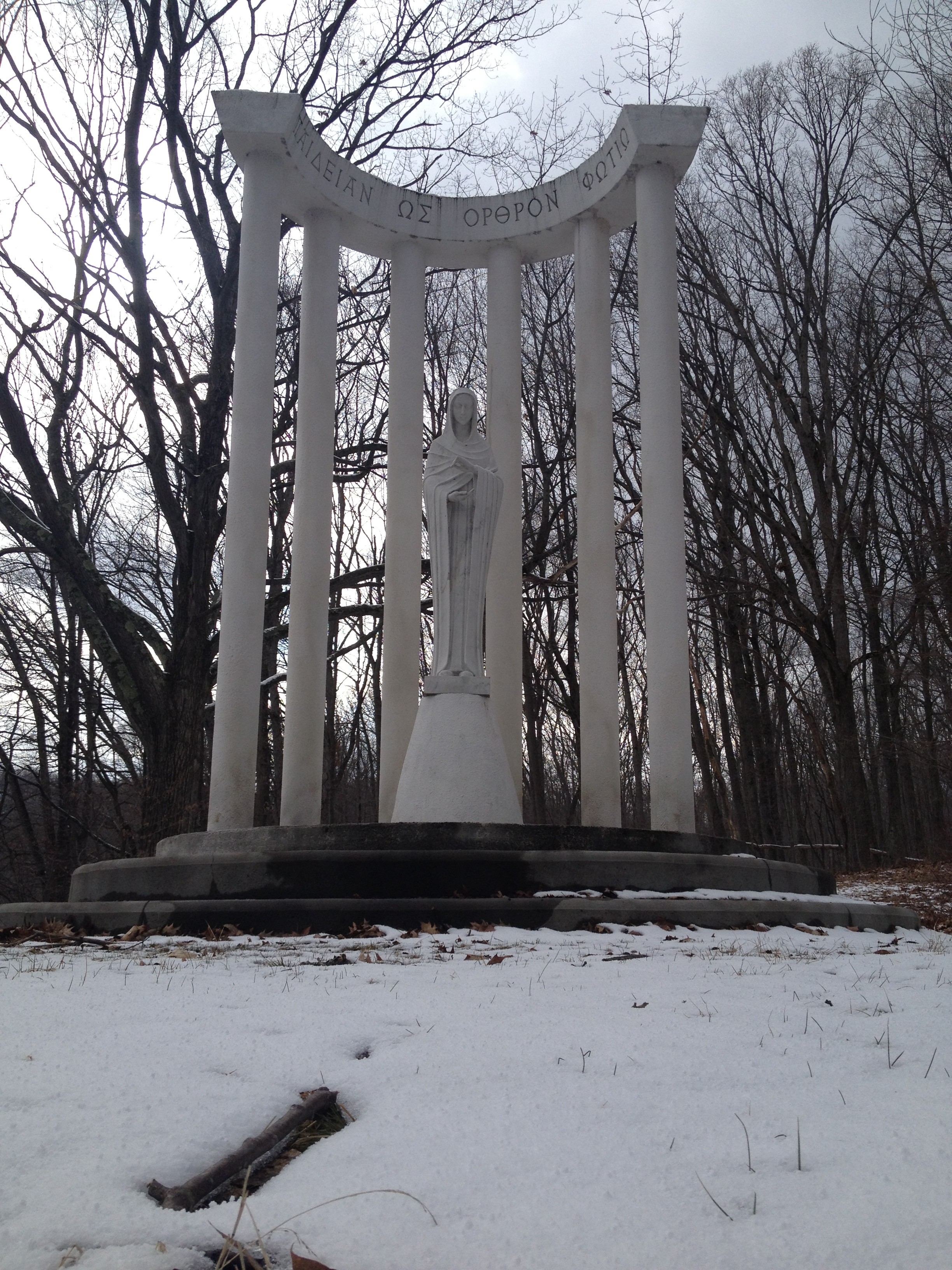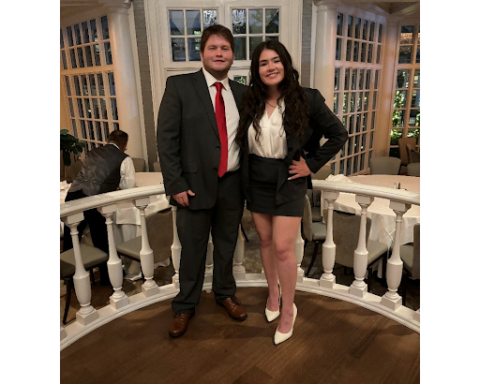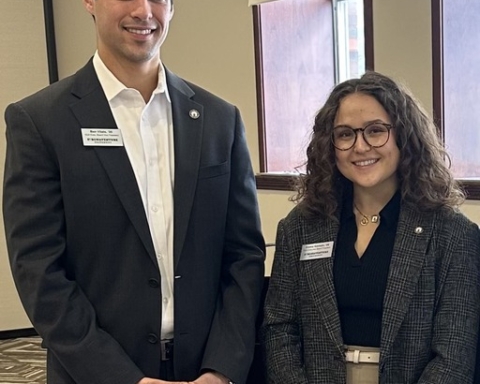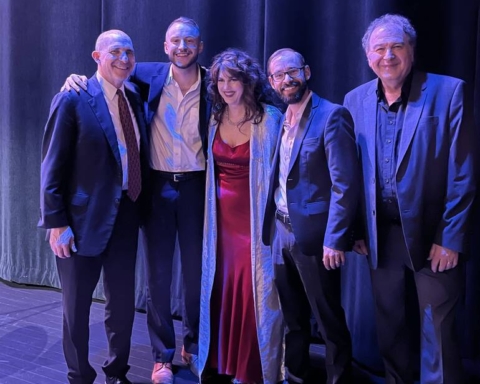By Samantha Berkhead
Managing Editor
As St. Bonaventure’s vibrant student body rushes past in ephemeral bursts of energy each day, stoic white figures frozen in stone stand watch across campus.
These statues, while easy to overlook in their silent stillness, symbolize the university’s spiritual and historic heartbeat.
“One of the things that I noticed when I started working here was that people tended to wander around campus and see all these things, but they weren’t really seeing them,” Dennis Frank, university archivist, said. “They didn’t know why they were there.”
Ask anyone who has taken the Clare course Catholic-Franciscan Heritage and they’ll tell you why the statue of St. Francis located in front of the Magnano Centre holds significance.
Francis Bernardone, a 13th-century native of Assisi, a town in central Italy, lived a rake’s life before beginning a gradual conversion to living by God and without material goods. Echoes of his centuries-old doctrine of piety and service to the needy exist all over St. Bonaventure’s curriculum and extracurricular life, having been adapted to the rigors of the 21st century.
Strangely enough, the statue doesn’t depict any of Francis’ attributes, such as the Tau cross, animals or the stigmata. Instead, he holds a crucifix and a book, a rosary hangs from his waist and a skull lies at his feet. It’s unclear what this symbolism means in the context of Francis’ life, but as is the case with all art, the meaning is entirely subjective and left to the viewer’s scope of interpretation.
For a student living in Devereux Hall who walks to the Hickey Dining Hall for breakfast every day, this rendering of Francis can serve as a daily reminder to live as he did — with an unwavering dedication to being good to others and oneself.
The statue also serves as a memorial to six individuals who either donated money or died shortly before its installation. Robert J. Kinsella, Jerry E. Mahaney, Edward D. Kane, Teresa R. Marra, Richard J. Griffin and James J. Moloney all passed away between 1949 and 1953, and St. Francis stands to commemorate their impact on the university.
St. Bonaventure’s namesake stands a short walk away on the lawn in front of Devereux Hall, known to many students as “Dev Beach.” Ordered from Italy in 1940, the statue, made of Carrara marble, stands seven feet high on a four-foot pedestal, according to university archives. Like the statue of St. Francis, students and faculty commissioned Bonaventure’s statue to remember three students who died in 1939.
Frank said the statue’s position facing outward from the center of campus might be changed in the near future.
“When he was put there, that was the front lawn — the campus was oriented toward State Street,” he said. “Now, that’s kind of our backyard — the campus is pointing more inward toward the quads between Dev, Butler and the Hickey. So the question is, do we want Bonaventure kind of left lonely out there, or do we want to bring him in where he’s more obvious on a day-to-day basis? All of those things are actively being considered right now.”
One statue whose location will likely never change is the shrine of Our Lady of Wisdom in the woods behind Francis Hall. Frank said Reverend Columban Duffy, O.F.M., a professor of dogmatic theology at the seminary that used to be in Francis Hall, designed the shrine specifically for that pocket of woodland.
“It’s a very attractive location there, and the statue is quite nice as well,” he said. “I believe that was commissioned and designed particularly for that spot. It’s one of the more special pieces on campus.”
Unlike the other statues on campus, the shrine to Mary was constructed in a classical Roman style utilizing columns and a crescent. Greek words are inscribed into the crescent, which can be translated to “I make Doctrine to shine forth as the morning light,” according to the archives. The passage, which comes from the book of Ecclesiastes, has often been used in reference to Mary. The actual statue, sculpted by Frederick C. Shrady, stands eight feet tall and the university installed it in the woods in 1956.
The only statue that represents an actual member of the St. Bonaventure community is also perhaps the most-seen on campus, standing in front of the Friedsam Memorial Library. It represents Father Joe Butler, the eighth president of the university from 1887 to 1911, according to Frank.
“He was particularly known for being one of the people who got the athletic program going on campus,” Frank said. “That’s why there’s the ballplayer on one side of him and the clerical student on the other.”
The ballplayer and the clerical student who flank Father Joe were sculpted to represent the two facets of the college’s campus life at the time, according to University Archives. Father Thomas Plassmann came up with the idea for commemorating Father Joe with a statue. On June 15, 1921, Reverend Francis J. Tief, bishop of Concordia, Kan., unveiled the statue to the campus community.
On Sunday, Father Joe will get to display his native Irish pride with the rest of campus on St. Patrick’s Day. It has become tradition for students to dress the statue in green attire and accessories the night before the holiday.
All this information can be found on a website run by University Archives, web.sbu.edu/friedsam/archives/buildings/shrines. Frank said University Archives staff also gives walking tours of campus buildings and statues to anyone who requests one.
Conversely, finding information on those commemorated on statues and plaques around campus can be difficult for the inquisitive mind. As a result, Frank said he hopes to create another website to explain the histories of these significant individuals.
“We try to make sure that the historical facts are accurate,” he said. “We’ve discovered that there are a number of stories about different things on campus that get adjusted subtly as time goes by. Our job is keeping the records and writing the history so people can investigate them fairly quickly and find out what they are.”









